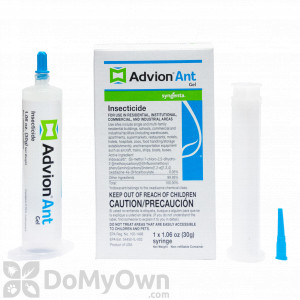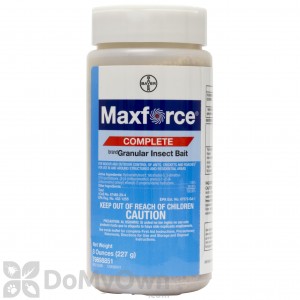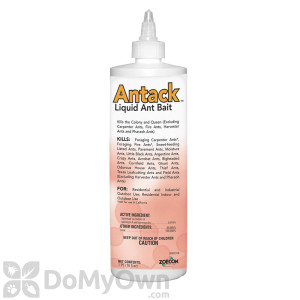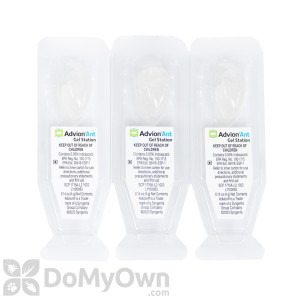Pavement Ant Treatment
By DoMyOwn staff
It is easy for Pavement Ants and other small insects to gain access to homes and buildings through tiny cracks or gaps in the foundation (most often around doors and windows.) These areas should be thoroughly inspected and potential entry points sealed up by caulk or other exclusion material.
Step 1) Inspection
In order to treat a Pavement Ant infestation properly, you must first inspect the property thoroughly inside and out for mounds or other potential nesting sites.
Possible outdoor nesting sites for Pavement Ants include: underneath the pavement in curbs, driveways, sidewalks, (manifest by an obvious piling of dirt on top), underneath brick patios, landscaping, rocks, and mulch, etc.
Possible indoor nesting sites for Pavement Ants include: in wall voids, beneath toilets and water heaters, under the insulation in attics, above false ceilings, etc.
Step 2) Treat all known colonies.
Drench all outdoor Pavement Ant mounds with Cyper WSP or Demon WP Insecticide, using a gallon sprayer. Drenching simply means applying enough of the liquid insecticide to drown all ants in the nest and surrounding area. Always read the product label for specific directions on mound treatments. Pets and children should be kept away from the treated area until the solution has dried.
Indoor colonies should be dusted using a hand duster and Delta Dust Insecticide.
Read more information on how to treat ant nests outdoors and indoors.
Step 3) Spray & Dust Treatments
Spray Treatments : In addition to treating the colony, do a thorough inspection inside and outside for any additional trails, entry points, and hiding places. Each location where Pavement Ant activity is sighted or suspected should be treated with a Cypermethrin residual product like Cyper WSP, or Demon WP Insecticide. For outdoor spraying: Spray a good barrier around the home. A fan spray that is at least 3 feet high on the side of the building and 3 to 6 feet out on the ground will provide excellent protection.
Dust Treatments: Indoor colonies may be treated with a residual dust pesticide. Dust underneath baseboards, and inside cracks, crevices, and voids where activity is suspected with Delta Dust Insecticide. This is easy to apply using a professional Hand Duster.
Step 4) Baiting
While locating and treating the ant colony is ideal, it is often not realistic to expect that homeowners have the time or patience to try to follow ants to the nest, especially indoor nests which can be tricky to locate. Fortunately, you can almost never go wrong with baiting inside while spraying the outside perimeter. It may take 3 to 5 days to see results with baiting, but it is almost always more effective than spraying indoors because the ants have time to take the bait back to their nests, which will eventually lead to colony elimination. Remember, you may use either baits or sprays, but not both! Spraying a residual around baits will contaminate them and repel the ants from taking the bait.
Recommended baits for Pavement Ants:
- Advance 375A Select Granular Ant Bait
- Maxforce Fleet Ant Bait Gel
- Niban FG Fine Granular Bait (1 lb.)
- Gourmet Ant Bait Gel
Click here to read more on Ant Baiting Tips
Additional Methods for Pavement Ant Prevention & Control
After you have applied the appropriate pesticide chemicals, these additional non chemical methods will help you to maintain control and prevent future pavement ant infestations:
- Practice good sanitation.
- Limit food preparation and consumption to one or two areas of the home that are cleaned daily.
- Eliminate gaps and cracks in the foundation, baseboards, window frames, and door frames with caulk or other appropriate material to eliminate ant entryways.
- Materials such as stacked or piled lumber, stones, bricks, leaf litter, heavy mulch, and other debris that serve as potential ant harborages should be removed as far from the structure as possible.
- Trim the branches of trees, shrubs, and other vegetation that may serve as ant highways so they do not touch the structure.
- Repair leaky pipes and faucets.
Products
All Ant Control products
95 of 109 people found this article informative and helpful.



